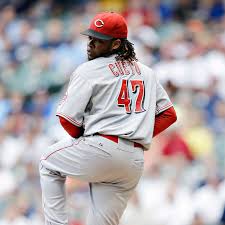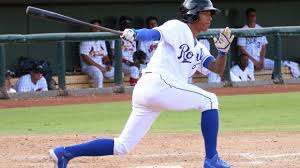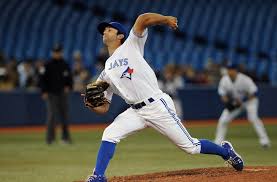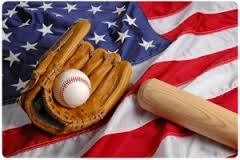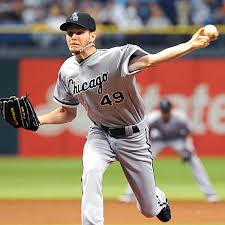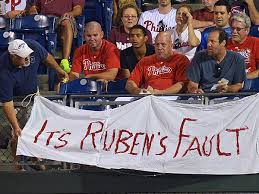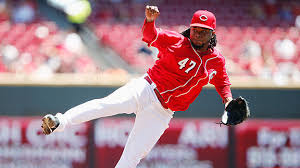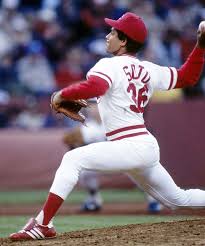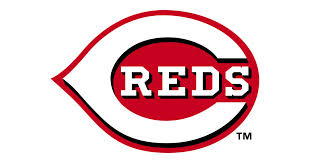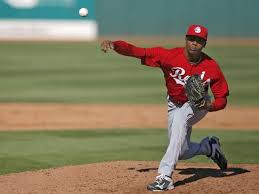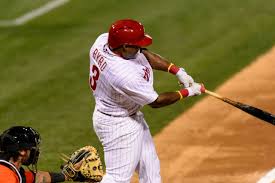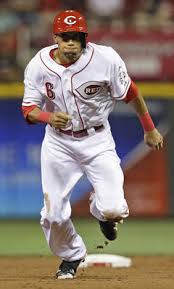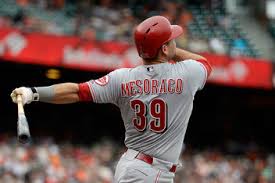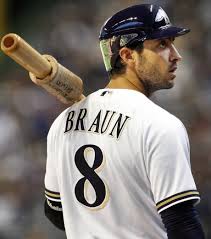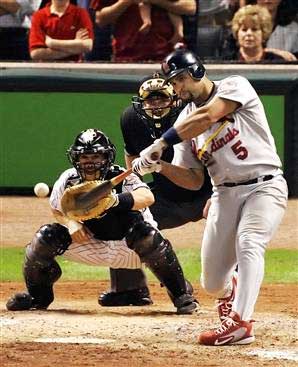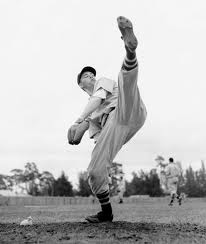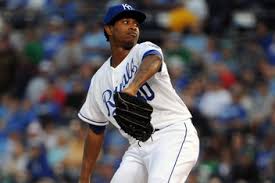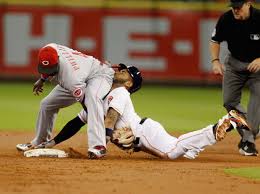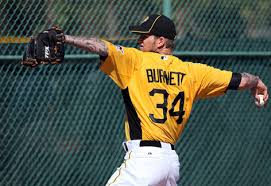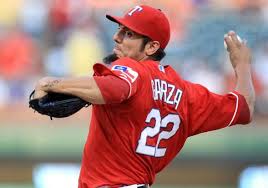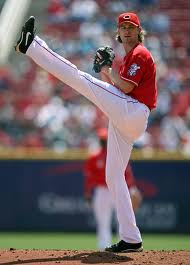#Royals officially acquire RHP Johnny Cueto from the Cincinnati Reds! #ForeverRoyal pic.twitter.com/BCFqbfpRKx
— Royals (@Royals) July 26, 2015
If you haven’t noticed, I’ve been keeping an eye on Johnny Cueto and the Cincinnati Reds deadline for quite some time, but you can’t blame a Cincinnati native and long-time Reds fan for being a homer. The deal that finally happened on Sunday, which resulted in the Cincinnati ace landing in Kansas City to anchor the Royals’ rotation in their push towards the playoffs, was something that was anticipated for months. Unfortunately, my prediction from this offseason, which had him landing in Boston, flopped about as much as the Red Sox have this season. Still, Cincinnati is left with a lot of question marks, especially since management isn’t done making moves. If you’re like me, you understand that this deal needed to happen so that the Reds could regroup and be competitive in a couple of years. If you’re pissed off because the Reds just traded their ace and have no one readily available to take on that role – you may want to take a step back from the ledge.
IT IS OFFICIAL!!! Reds receive Brandon Finnegan, Cody Reed, & John Lamb all left handed pitchers! pic.twitter.com/lkG28hkWUV — Reds Problems (@redsproblems) July 26, 2015
The Reds are headed towards a new era, and likely one with several years of trying to figure things out, resulting in 90 or more losses per season; however, Sunday’s deal was a tremendous start in showing that they are capable of righting the ship quickly. Here is some reaction from the experts:
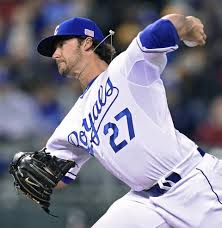
Courtesy: kansascity.com
About Finnegan:
“…Coming to the Reds, there is no reason he shouldn’t be given another chance to lengthen out into a starting role. Finnegan has the arsenal of a starting pitcher and while he is short, he has some present strength. If Finnegan moves back into a starting role, he needs to work on regaining the feel for his changeup. As a reliever, he’s largely junked the pitch but it was above-average at times when he was pitching as a starter in college. This year Finnegan has largely focused on using his 92-95 mph fastball and his slider which flashes above-average.” – J.J. Cooper, Baseball America
“…Finnegan’s changeup is obviously going to be the separator there, as far as any hope of starting goes. It’s a genuinely strong pitch, able to generate whiffs and ground balls against right-handers in its limited exposure to date. He has an excellent sinker/slider combination, although neither have yet passed the MLB test in more than a single trip through the order. If he can wield that change as a weapon against righties in larger samples, he’s a starter, and probably a good one.” – Baseball Prospectus

Courtesy: royalrevival.blogspot.com
About Lamb:
“…He now sits 88-93 mph, but he’ll touch 95 occasionally. More importantly he’s added a cutter that has quickly become a pitch that compensates for his still fringy curveball. His changeup isn’t as good as it was pre-injury but it’s an average offering as well.” – J.J. Cooper, Baseball America
“…Though Lamb still can hit 96 mph on occasion, he has lost a couple of ticks off his fastball and usually works from 89-93. His changeup isn’t the weapon it once was, so he has come up with a low-80s cutter to keep right-handers at bay. He also has a soft curveball that wasn’t much of a factor before he got hurt.After battling his control and command in his first two Triple-A stints, Lamb has thrown more strikes and was doing a better job of keeping the ball down in the zone in 2015. He won’t be the frontline starter he once projected to be, but he could help the Reds in the near future.” – Jonathan Mayo, MLB.com
“…He works with a 90-92 mph fastball, and he still possesses a plus change that has excellent deception from arm speed with some downward movement to it as well. The curve will never be much more than a 45 offering—and he’ll likely need to add some velocity to it. The key is the development of his cutter, which many scouts attribute his 2015 step forward to. If it can continue to be another weapon for him, he stands a good chance to be a competent back-end starter.” – Baseball Prospectus

Courtesy: milb.com
About Reed:
“…With a better finish to his delivery, he developed the ability to locate more consistently down in the zone, allowing his 92-95 mph fastball (which touches 97 mph at its best) to play better down in the zone. It has late life when he elevates it as well. Reed flashes an above-average slider that he can now throw for strikes as well as using as a chase pitch. And his once fringy changeup has improved to become an average offering.” – J.J. Cooper, Baseball America
“…Reed works with a 90-94 mph fastball that peaks at 96 and has some sinking and cutting action. He has greatly improved his changeup this season, and at times it’s his second-best offering. Reed always had the athleticism to repeat his delivery but struggled to do so before 2015. Now he’s more aggressive and filling the strike zone with ease, showing the potential to become a mid-rotation starter with three solid-or-better pitches.” – Jonathan Mayo, MLB.com
“…The improved control gives him a chance to start, but of the three arms acquired, this is the one who is the most likely to end up in the bullpen.” – Baseball Prospectus
In Cueto, Kansas City is getting a dynamic starter who has managed to go 60-31 with a 2.51 ERA (3.33 FIP), 1.05 WHIP, and 7.7 K:9 since the start of the 2011 season, covering 808 innings over 121 starts (6.7 IP/start). He’ll likely take Yordano Ventura‘s rotation spot, as he was just shipped to Triple-A prior to the injury to Jason Vargas, and he’ll be exactly what the team needs, an ace, while the Royals’ defense will only make him look better than he did in Cincinnati.
Being left-handed and breathing is an excellent way to score an opportunity in baseball. The fact that the Reds were able to get three left-handed pitchers who can touch the mid-90’s with their fastballs for three months of Cueto is a coup. This deal was very even, and even though Cincinnati will need to wait and see what happens with these young arms, the Reds did just as well to get the pieces that they needed as what the Royals did in getting the ace that they needed.
Cincinnati fans need to understand that this is just the beginning of several changes. If Jay Bruce, Aroldis Chapman, Brandon Phillips, and Marlon Byrd are still with the team on August 1st, Walt Jocketty is doing it wrong. This team hasn’t won a World Series since 1990, and those players aren’t going to bring another to Cincinnati. Scrap it and start over. While it is painful to go through a process, just remember that things could be worse, even if we may not be able to say it much longer – Thanks, Cubs!
